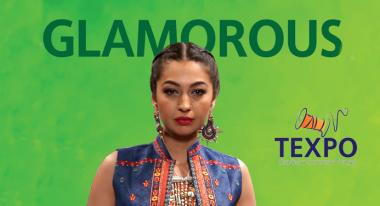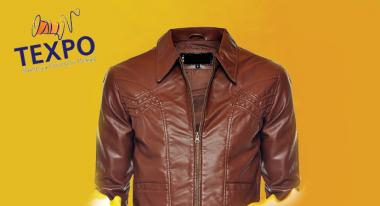TEXPO 2016 - INTERVIEW ON THE OCCASION OF THE FIRST TEXTILE FAIR AT KARACHI EXPO CENTER
The Trade Development Authority of Pakistan (TDAP) organizes from April 07th - 10th a new textile exhibition, the TEXPO in Karachi. This exhibition has been conceived as a whole sector comprehensive trade fair and should help to promote the export business of Pakistani textile and clothing companies. A month before the opening Textination got the opportunity to speak with the person in charge in Germany, the trade expert Mr. Rizwan Tariq from the Pakistani Consulate General in Frankfurt.
| T | Mr. Rizwan, you can tell us some figures about the current state? How many exhibitors will take part in the event and how big is the occupied exhibition space? |
| RT | There will be around 400 exhibitors and the occupied exhibition space would be around 20,000 sqm. This is the 1st edition of the exhibition and next year the number will double. |
| T | How many visitors are you expecting? What is the expected proportion from Asia, the US and Europe? |
| RT | All Pakistan Embassies and Consulates worldwide are marketing the event as it is the 1st ever Government sponsored textile & clothing exhibition. So we are expecting visitors from around 50 countries. There will be a large number of buyers from Asia especially China. US and Europe will constitute the remaining half. |
| T | From August 27th - 29th 2016, the 14th textile trade show Textile Asia will be held in Lahore. Please explain how complementary or overlapping these two fairs will be and what are the main differences? |
| RT | Textile Asia focuses on textile machinery, chemicals and dyes and other technology used by the textile industry of Pakistan. Both the fairs are aimed at different end customer. Texpo is the fair of Textile Industry which will sell its final product to the world while in Textile Asia, machinery and chemical/ dye manufacturers from all over the world come to Pakistan to sell their products to Pakistan’s textile industry. |
| T | What is the current reaction of the international textile world to the new TEXPO event? What kind of feedback did you receive? |
| RT | As I said earlier, this is the 1st edition of the exhibition but we are hopeful for positive results. Pakistan is already exporting textile products worth billions of dollars worldwide. So we already have a big customer base across the world. The main purpose of the fair is to give a positive message to our valuable buyers that we are a safe country to travel and that they should not have any apprehensions in visiting their suppliers. |
| T | Will the generous visitor program be used by German companies - can you give us a few names? |
| RT | Yes quite a few German companies have expressed their interest in visiting the event. Polo-Motorrand, Summary AG and a few other big names have already joined the delegation from Germany. Big German clothing retailers either already have their buying agents and Offices in Pakistan or in the neighbouring countries like India, Bangladesh and China. So some of the German representatives will also be coming from Asian countries. |
| T | What kind of framework program, company visits, lectures, seminars or any other conference events will accompany the exhibition? |
| RT | There will an Inaugural dinner on the 6th of April at the Sindh Governor House. It is a beautiful building built during the 18th Century and speaks of its glory. Then the 1st two days of the exhibition are for the foreign delegates/ buyers only. In the evenings we will have fashion shows where top Pakistani designers will display their design for international audience. The guests/ delegates will be free during the days to visit the exhibition and also plan their visits to manufacturing facilities of the exhibitors. |
| T | Since many years Pakistan's textile industry is very active on European and US markets. What caused TDAP to initiate such a big new show in Karachi? |
| RT |
Yes, Pakistan’s textile industry is very active in European and US markets but there is always room for growth. Like I explained earlier the event has multiple purposes. First, Pakistan is known in the news/ media for all the wrong reasons like terrorism etc. whereas ground reality is totally different. So one purpose is to promote the real image of Pakistan. Our valuable customers should come and see for themselves and experience our hospitality. Secondly, Pakistan has been granted GSP Plus preferential market access by the European Union for 10 years starting from January 2014. Almost all textile products from Pakistan enter European Union at Zero Customs duty. This is a 10-20 percent cost advantage over our competition. So the Government of Pakistan intends on helping the industry to maximum possible extent to increase their business especially to Europe. This event will also help the new manufacturers to meet international customers at home and learn about new technology and trends in the international market. Similarly our valued customers will have the opportunity to meet new suppliers. So it will be a win win for all. |
| T | At many large textile and clothing trade shows - whether in Germany, other European countries or the US - many wellknown Pakistani manufacturers of bedding products, home textiles, cotton fabrics and of course clothing are showing again and again since many years. Will now mostly the same manufacturers or exhibitors be present at TEXPO, or will new, not yet so much export-oriented companies exhibit in Karachi? |
| RT | Well! The big companies will ofcourse be there. They would definitely not to forego this opportunity to meet new buyers or loose their old buyers to competition. But there will also be a large number of SMEs and new exporters. |
| T | Which visitor groups are you mainly targeting with the new fair - trading houses, purchasing associations, retail-chains, department stores, discount–chains or other businesses? |
| RT | We are targeting all kinds of textile buyers. Pakistan produces textiles for all segments of the market. |
| T | Karachi was and is considered as being not a very safe city. Several terrorist attacks have happened there. What kind of security measures do you intend and what code of behavior will you recommend to your international visitors? |
| RT |
As I have already explained, there is a lot of negative news in the media. Karachi is a city of around 20 million people and people are leaving in peace and harmony. This is Government sponsored event so security of the guests is also being taken care of by the Government. We will advise the buyers to move out of their hotels with known associates and friends and that they should inform the hotel management and the Organisers help desk at the hotel of their plans before leaving. The transport for the registered guests is also being arranged by the Government so all security related aspects are being taken care of. There is no serious security situation in the city but the above care will help the visitors in gaining confidence for their security arrangements. |
Thank you very much for the interview, we wish the entire TEXPO team a succesful premiere.
For further information please contact:
1. Mr. Rizwan Tariq
Commercial Counsellor
Consulate General of Pakistan, Frankfurt am Main
Tel: +49 69-6976970
Mobil: +49 176-31363223
Email: pakcom.frk@tdap.gov.pk
2. Mr. Matthias Theis
Honorary Consul of Pakistan for the state of NRW, Düssseldorf
Tel.: +49 211 4407227
Email: office@pakistan-nrw.de
3. Mr. Rainer Borch
Trade Development Officer
Embassy of Pakistan Berlin
Tel.: +49 30-21244145
Mobil: +49 163-3736036
E-Mail: tdo@pakemb.de oder rainer.borch@aol.de
 Trade Development Authority of Pakistan (TDAP) / TEXPO
Trade Development Authority of Pakistan (TDAP) / TEXPO
 Trade Development Authority of Pakistan (TDAP) / TEXPO
Trade Development Authority of Pakistan (TDAP) / TEXPO
TEXPO 2016 INTERVIEW The Trade Development Authority of Pakistan Textilmesse Rizwan
Textination GmbH

